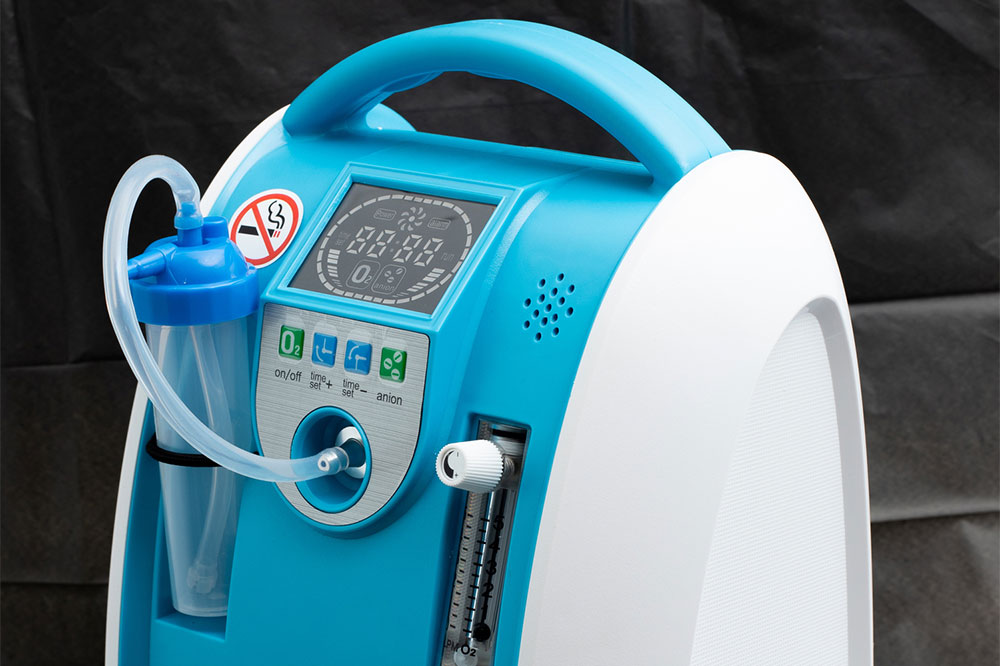
Oxygen concentrators – Their uses, benefits, and maintenance
Oxygen concentrators are medical devices used to supply point-of-care requirements. They are often used in developing countries with inadequate cylinders and piped systems or health facilities that face a shortage of trained staff or appropriate electricity. They are also used to assist those with asthma, lung disease, flu, and hypoxemia. However, these devices must only be used if prescribed by a doctor, as the patient should be aware of the required oxygen intake.
Importance of oxygen concentrators
Oxygen supply, classified under the list of essential medicines, is still limited in certain countries due to factors such as cost and lack of infrastructure. This is where oxygen concentrators gain importance, as they are cost-effective and feasible and provide reliable oxygen supply for multiple people.
They require minimal maintenance and service and can last up to five years with appropriate care. These important medical devices help reduce the mortality rate associated with hypoxemia and have been able to increase oxygen availability in health facilities with limited oxygen supply.
Specifications of oxygen concentrators
They are electrically-powered medical devices that are self-contained and serve the purpose of providing concentrated oxygen from the surrounding air. They can produce up to 95.5 percent concentrated oxygen by using the pressure swing adsorption process.
However, most oxygen concentrators must produce around 82-96 percent of oxygen 24 hours a day, the entire week for up to five years. In these devices, nitrogen gas from the atmospheric air is separated with the help of a mineral material called zeolite to produce concentrated levels of oxygen.
Types of oxygen concentrators
There are mainly two types of oxygen concentrators. They are mentioned below:
Stationary oxygen concentrators
This specific type of oxygen concentrator weighs less than 27 kg and comes with wheels for convenient mobility. These self-contained devices can produce ten liters of concentrated oxygen per minute (LPM) and are suitable for health facilities that require an oxygen supply of at least five liters per minute.
Most stationary oxygen concentrators require about 280-600 watts of alternating current electricity. However, this entirely depends on the model, as specific products are manufactured to suit the voltage and frequency of local grid power.
Portable oxygen concentrators
Portable oxygen concentrators produce fewer amounts of oxygen when compared to stationary oxygen concentrators. This can be about three liters per minute or even less. These are often used as ambulatory oxygen systems and may also be battery-operated. However, this portable type may not suit multiple patients, as the flow capacity is low in such concentrators. These concentrators provide oxygen as a “pulse dose,” i.e., in small bursts during inhalation. However, certain models can supply oxygen to the patient at a steady rate.
Workings of oxygen concentrators
An oxygen tank provides liquid or oxygen gas. On the other hand, an oxygen concentrator absorbs air from the environment and provides concentrated oxygen. A gross particle and intake filter draws in the air from the atmosphere, which is then passed through a heat exchanger to reduce the temperature. The pressurized air then enters the sieve beds containing zeolite, which filters out the nitrogen gas from the air.
The oxygen is transferred to the reservoir through valves, from where it is measured using a flowmeter for continuous and predetermined release of oxygen to the patient.
Uses
Oxygen concentrators are not just limited to medical use. Unlike oxygen tanks or cylinders, these are inexpensive and are employed in industries such as pharmaceuticals, water treatment companies, and glass manufacturers.
They are also used in inaccessible parts of the world and even in mobile medical units that are used in military hospitals and facilities, specifically designed for disaster management. Apart from that, oxygen concentrators are also a part of airlines, especially in an aircraft without cabin pressurization.
Maintenance
Maintenance, although minimal, must be regular for the maximum and long-lasting use of oxygen concentrators. The compressor can undergo changes, as it is the primary component that is constantly in motion. So it may be prone to more wear and tear than the rest of the device. This may require both technical and clinical maintenance.
At-home maintenance of oxygen concentrators will include thorough cleaning of the tubing or face mask using mild dish soap and water. The humidifier must be cleaned every three days by rinsing with warm water and mild dish soap. Soaking in a mixture of water and vinegar will help clear bacteria. The concentrator filter can be cleaned once a month by dipping it in a container filled with water and mild dish wash soap. Use a washcloth to remove residue and rinse it under water, and let it air dry.




